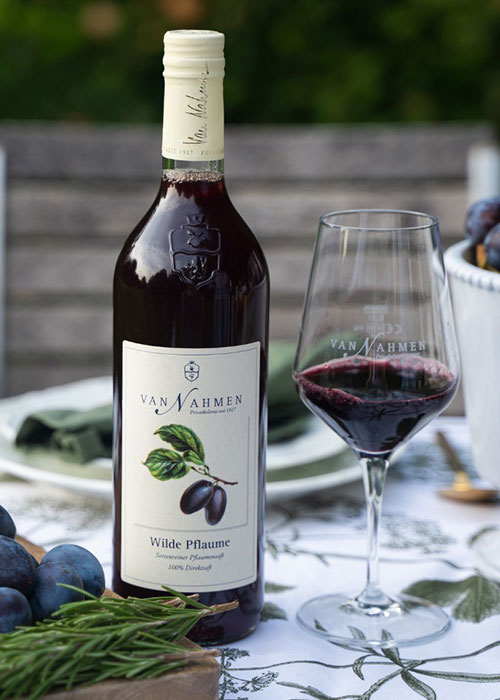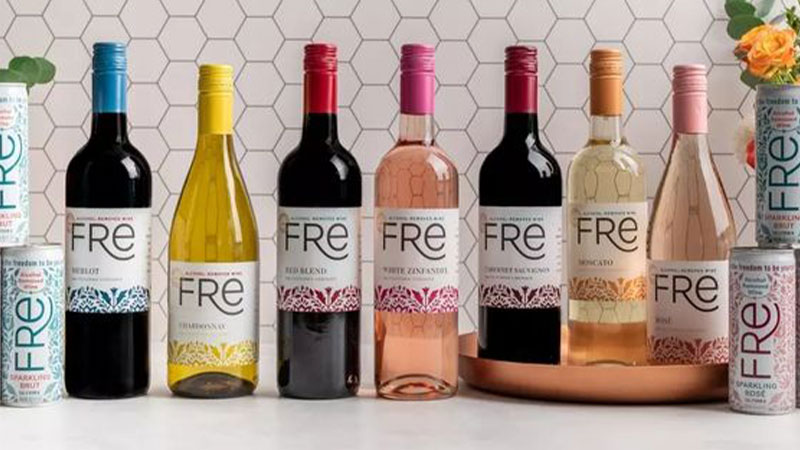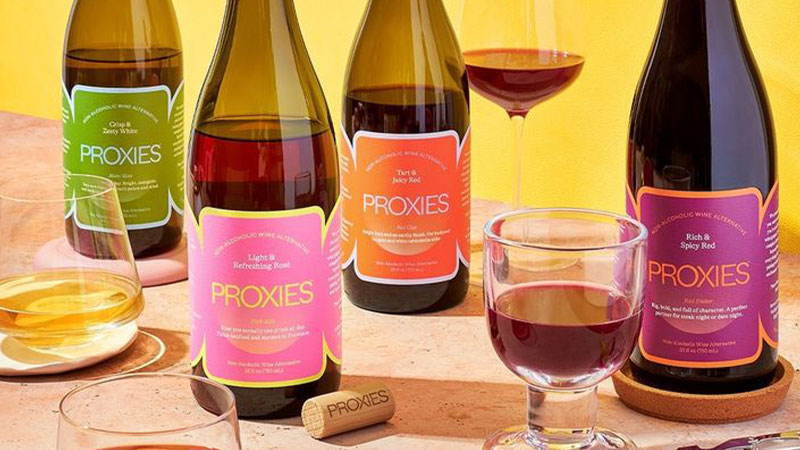In the rising tide of non-alcoholic beverages — a category that has demonstrated exponential growth since Britain first linked the words “dry” and “January” to a seismic effect in 2013 — non-alcoholic wine has tended to lag behind N/A beer and spirits in both production and sales. Wine alternatives, however, are poised to close that gap, with both existing wine brands and new ventures entering the N/A space to capture rising interest in those products. “2021 and 2022 in particular saw immense growth in the non-alcoholic wine category as consumers increasingly reduced their alcohol consumption,” says Jennifer Hohman, director of marketing for non-alcoholic wine brand FRE. “The demand for quality wine alternatives at top-tier restaurants continues to grow, not only in January but year-round,” adds Charlie Friedmann, president of Acid League Proxies.
Not all non-alcoholic wines are created equal, however, with differing approaches and processes resulting in products that are as varied as the world of traditional wine itself. Here, we look at three different approaches to crafting no-ABV vino.
Varietal Grape Juice
Anderson Valley’s Navarro Vineyards has offered Pinot Noir and Gewürztraminer juice long before the phrase “sober curious” entered our lexicon. While varietal grape juice made from vitis vinifera grapes wasn’t necessarily developed to be a wine replacement, it nonetheless represents an interesting option for those seeking an alternative.
Don’t Miss A Drop
Get the latest in beer, wine, and cocktail culture sent straight to your inbox.
Jim Klein, Navarro’s winemaker, recalls that winery owners Ted Bennett and Deborah Cahn began making the wine alternative as early as 1981. “They wanted to have grape juice for the kids,” he says, not only for their own children who were growing up among the vineyards, but also to offer to families visiting their tasting room. As a nuanced juice option, it gained an early following among chefs, with Alice Waters’ Chez Panisse being one of the first adopters to serve it in the dining room, and which — along with other fine- dining restaurants throughout the country — still carries Navarro’s grape juice.
In terms of its production, “it’s not an easy product to make, because we don’t just put it in a tank and forget about it until bottling season,” says Klein. “We actually try to make a real effort to filter it and take it from vineyard to bottle within about 15 to 21 days, so when you taste our grape juice, it’s a fairly similar experience to what we get right out of the press pan.”

As with wine, that effort also begins in the vineyard, where grape clusters with a precise balance between acidity and sweetness are culled for juice. This results in juices that are lightly sweet and highly suggestive of the flavor of wines made from the same grapes, as well as a stark departure from the conventional, bottled juice typically made from Concord grapes. “The distinctive flavor of Concord comes from methyl anthranilate,” says Klein, a particularly “grapey” or “foxy” flavor whose synthetic version results in something similar to grape Kool-Aid. “That’s not a flavor that’s associated with grapes anywhere else in the world.”
Because of the sweetness of actual grape juice compared to other N/A wine options, Klein suggests cutting it with sparkling water. “You get lots of flavor, and you still have plenty of acid and the pH gets buffered down,” he says. “To me, that’s a really nice beverage.”
While bottled varietal juice isn’t widely made in the United States, several European producers such as Van Nahmen and Alain Milliat offer unfermented wine grape juices. Verjus — the unfermented juice of unripe grapes — is common in winemaking countries but is typically used as a cooking wine alternative.
Dealcoholized Wine
Dealcoholized wine is the most readily available form of N/A wine, going a step further than bottled varietal juice by taking fully vinified wine and then removing the alcohol. While N/A wine is still catching up, volume-wise, with alcohol-free beer and spiritless spirits, California’s Trinchero Family Estates has been making dealcoholized wine under its FRE label since 1992.

“Creating alcohol-removed wine isn’t much different from making traditional wine, at least initially,” says Hohman. site selection plays a major part in identifying grapes that are especially expressive and can still deliver on aroma and flavor given the one-two punch of going through both fermentation and dealcoholization. “Following harvest, we put the juice through traditional winemaking methods to achieve rich flavor with texture and balance,” she says. Spinning cone technology, a form of vacuum steam distillation, is then employed to remove alcohol from the wine, while leaving the essence of the wine intact. Cabernet Sauvignon still behaves like Cabernet Sauvignon, with its dark fruit character, graphite notes, and tannic texture — minus the heat that would come with the alcohol, and with less sweetness than a bottled varietal juice would produce.
Spinning cone technology is not only utilized for N/A wine. Lower-ABV wines may also rely on a portion of alcohol being removed by spinning cone technology, and in some regions, it is permitted to correct especially robust wines whose ABVs have risen above 16 percent, a practice that is on the rise due to increasingly hotter vintages worldwide.
FRE offers eight unique expressions, including both still and sparkling varieties. Other wineries entering the N/A space often create separate labels for alcohol-removed bottlings. However, some brands from around the world, notably Leitz, Wolffer, Giesen, and Freixenet have no-ABV wines under their own names.
Emulating Wine Flavors and Body From Scratch
By definition, a proxy is someone with the authority to represent someone else — a fitting label for a product designed to emulate wine. “Unlike dealcoholized wine, which is about taking something out, we build Proxies from the ground up,” says Friedmann. “We layer ingredients like varietal wine grapes, fruits, teas, spices, bitters, and more in order to produce the complexity, tannin, texture, acid, and body intrinsic in wine.”

Started in 2020 by a collective of wine professionals looking to build something with more complexity than what was already on the market in the N/A space, Proxies were specifically designed with a food pairing mentality. “With spicy food, for example, the alcohol in wine is always going to exacerbate the effect of capsaicin,” says Friedmann. “With Proxies, we can create something that has the necessary texture, richness, and complementary flavors, and without the alcohol it’s actually a better pairing experience where food and beverage can work together with no restrictions.”
Unlike other botanically driven, non-alcoholic elixirs that have aligned themselves more with spirits, cocktails, or aperitifs, Proxies are bottled to look like wine, with names that evoke the grapes or regions they seek to emulate: Blanc Slate as a Sauvignon Blanc-alike, and Red Clay as a Beaujolais alternative, for example. Because of its experimental nature, there is no varietal limitation in Proxies, and to date it has produced more than 60 varieties, attracting the attention of fine-dining champions such as chef Dominique Crenn and sommelier and restaurateur André Hueston Mack.
Other brands that produce N/A sippers modeled after wine include NON, Three Spirit’s Blurred Vines, and Töst.


